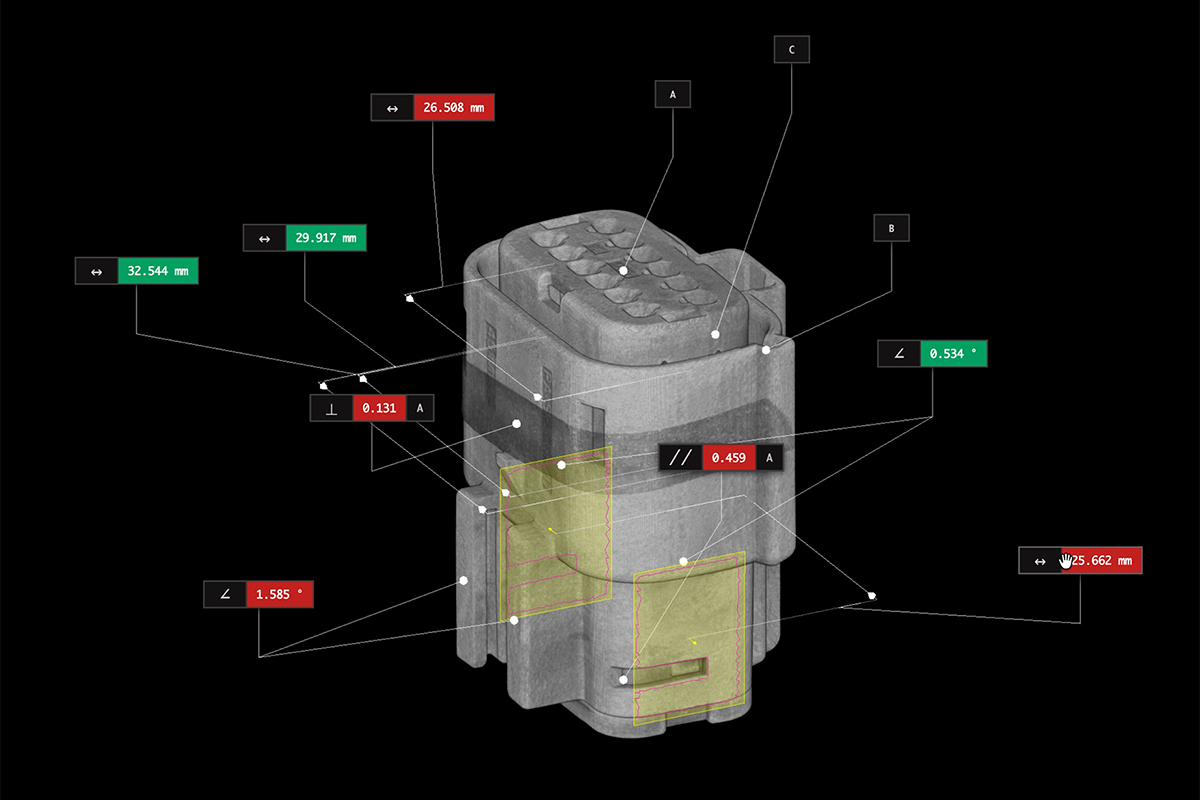Looking inside vacuum tubes with Adam Savage
Adam Savage loves to “peel the curtain back on the world,” and there’s no better way to do that than with an industrial CT scanner. When he wanted to understand a pair of giant vacuum tubes from his collection, Adam and his Tested team visited Lumafield and met Scott Johnston, our co-founder and head of engineering.
Industrial CT uses a series of X-ray images taken from different angles to build a 3D model of an object's external and internal structures. Engineers use the technology to refine their designs and troubleshoot their manufacturing processes for a wide variety of products like medical devices and lithium-ion batteries.
Scott and Adam used our Neptune industrial CT scanner to study two remarkable pieces of analog engineering: a Philips XP3422 photomultiplier and an EEV CX1538 hydrogen tetrode thyratron tube.
The photomultiplier turns light into a measurable electrical current. It’s a predecessor to the image sensors found in contemporary digital cameras. This one is so sensitive that it can even detect individual photons. Our CT scans illuminate the internal structure of a curved dinode path that multiplies the input photons into electrons until they hit the anode at the back to generate a signal. You can explore the photomultiplier scan in Lumafield's free Voyager software; just create a free account when prompted.
Adam’s powerful thyratron tube is a switch that can handle up to 25,000 volts and 1,000 amps of current. Tubes like this one manage high volumes of energy in pulsed gas lasers and linear accelerators, used in radiation treatment for cancer. Once a tube like this kicks on, it can’t be turned off, and it has to generate its own hydrogen to keep the plasma between the anode and cathode ignited. Lumafield’s scan shows the double helix structure of the all-important cathode, hidden behind a protective shield.
To bring things up to the present, Adam and Scott look inside a more modern power element, a switch module with a pair of IGBTs (Insulated Gate Bi-polar Transistors) optimized for heat extraction. Along the way, they also explore one of Scott’s favorite scans, a 3D printed shoe.
In everything from exotic electronics to shoes, industrial CT helps engineers take their designs to the next level and streamline manufacturing. It's also a fascinating way to pull back the curtain and gain a deeper understanding of the world around us.
Watch the video
Explore the scans and learn more
Industrial CT can help engineers in any industry perfect their products. Want to learn more? Watch our videos on medical devices and lithium-ion batteries to see how industrial CT catches small issues before they become big problems. If you're interested in exploring industrial CT for your application, contact us!










